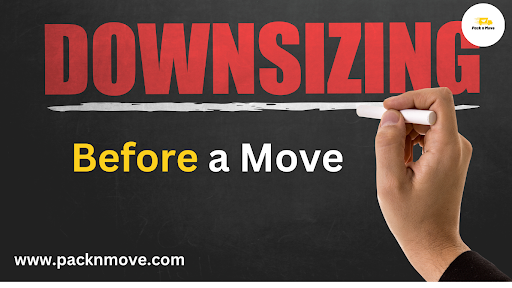Living in a large house can be wonderful, but the cost and effort of maintenance often become a burden, especially after the kids have grown up and moved out. If you feel overwhelmed in your current home, moving to a smaller space is a great move, both financially and mentally. It allows you to focus on what truly matters without the extra stress.
Decluttering and downsizing may seem like a daunting task, but you need a plan to make it easier. Start by sorting items room by room. If you need help getting started, follow these tips: tackle one room at a time, keep only essentials, and donate or sell the rest. These are the best tips for a stress-free move.
7 Most Effective Downsizing and Decluttering Tips
You’ve decided it’s time to sort through your belongings as you prepare for downsizing to a smaller home. Start by measuring your furniture to ensure it fits in your new space. As you unpack, consider throwing away or getting rid of items you no longer need.
Host a garage sale or yard sale to sell household items in good condition. This not only helps declutter your home but also provides extra cash for moving day. Focus on sentimental items and decide which are truly important to keep, simplifying your life in the process.
Use storage units wisely for items you want to keep but don’t have room for in your new space. Create a floor plan for your smaller home to visualize where everything will go. Remember, downsizing tips can make the process smoother, turning the thought of decluttering into a rewarding experience.
1. Take Inventory of Your Belongings

When downsizing to a smaller home, take inventory of your belongings before packing. Over the years, items accumulate, taking up space. Start sorting and separate important from what you actually need. Follow these 3 simple steps:
- Set a timeline
- Create a sorting system
- Purge clutter
This simplifies life and helps with organizing.
2. Sort Through Items Room-by-Room and Minimize Duplicates
When downsizing, sort belongings using the three-box method. This keeps you organized and helps with item-by-item decisions. Gather three boxes, label as “Keep,” “Get Rid Of,” and “Put in Storage.” Keep useful items needed in daily life. For duplicate items, especially in the kitchen, keep favorites; donate or pass others.
3. Create a Plan to Get Rid of Unwanted Items
Once you’ve identified items that aren’t coming with you to your new home, you have several options for getting rid of them. Donate to local charities that accept clothing, shoes, and household items in good condition. Try posting on freecycle.org or a Facebook resale group. Consider a yard sale or renting a dumpster if needed.
4. Go Digital When Possible
Once you’ve identified items that aren’t coming with you to your new home, you have several options for getting rid of them. Donate to local charities that accept clothing, shoes, and household items in good condition. Try posting on freecycle.org or a Facebook resale group. Consider a yard sale or renting a dumpster if needed.
5. Make the Most of Your Storage Spaces
When downsizing to a smaller home, maximize storage space. Use built-in storage options like multifunctional furniture, such as storage ottomans, platform beds with drawers, and entertainment centers. Wardrobes, bookshelves, and baskets help hide clutter. Floating shelves add space in the kitchen, bedroom, and bathroom. Utilize hidden spaces, over-the-door hooks, and towel racks efficiently.
6. Measure Furniture and Wait to Buy New Things
When downsizing to a smaller home, ensure your current furniture has enough room to fit. Take inventory of your belongings, measure each piece, and see if it will fit in your new space. Avoid buying new items until you get a sense of the space in your new home.
7. Give Yourself Plenty of Time
Figuring out how to downsize means knowing when to start. Decluttering is a journey, so give yourself more time than you think you’ll need to plan your move. Reflect and make rational decisions about what to keep or purge, and it will eliminate stress. Ask for help from family, friends, or a professional service.
Why You Should Downsize and Declutter
Many people downsize before a move to simplify their lives and fit in their new home. Tips for downsizing can make the process easier, especially when you’re decluttering your home. Start by going through your belongings and identifying what you truly need and what you don’t use.
Use 10 tips to help you downsize effectively, such as selling items on Facebook Marketplace or donating to charity. Remember to give yourself enough time to sort through much stuff and keep important documents organized. Even if you don’t think you have a lot to declutter, you’re downsizing will create a more manageable living space.
Less Mess, Less Stress

Having less to pack and unpack makes moving easier. Heading to a new location with fewer things helps you save precious time and money. This reduces the mental and physical stress of packing and unpacking. Downsizing creates a smoother transition, and you’ll enjoy an organized, calm space in your new home.
Taking Stock Can Help You Save
How many times have you purchased an item you thought you needed, only to discover later you already had it but had forgotten? Things get lost in the sauce of clutter. Going through your things beforehand helps reacquaint you with items, saving you from the mistake of buying them again efficiently.
If It Won’t Fit, Get Rid of It
Moving is costly and time-consuming, so be smart about the items you take to your new home. Knowing how to set up your space before the actual move helps. Consider if your furniture will fit or suit your needs. Get rid of items that don’t work to avoid a headache later.
A Clean Move Is Key
When downsizing, having a clean move is essential. Piles of possessions can become a breeding ground for problems like mold, mildew, and unwelcome house guests. Things left sitting in hidden areas like closets or basements can lead to pest infestations. Ensure your belongings are free from unwanted contaminants and pests for a fresh start.
